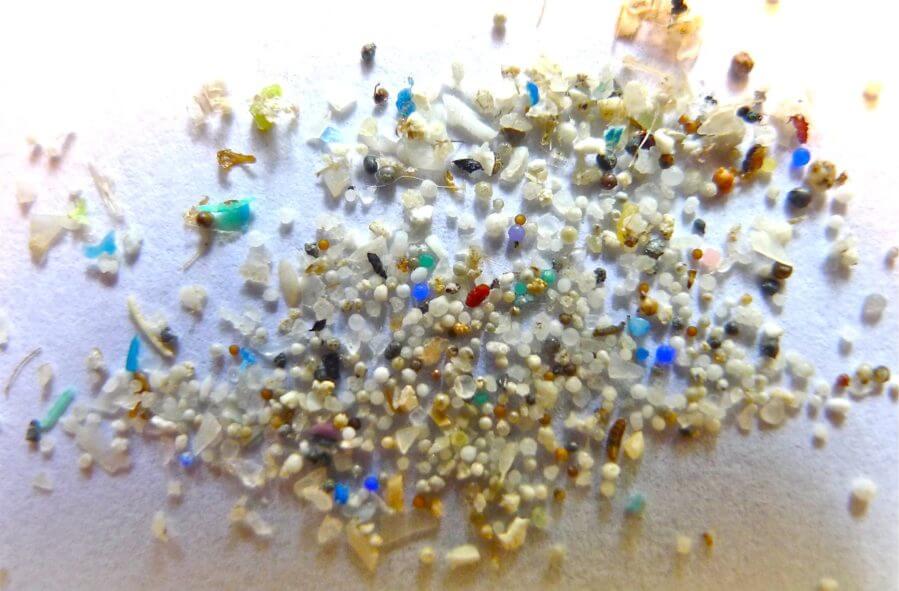The tiny bits of plastic scattered across the planet are doing more than just polluting oceans and landscapes—they’re actively undermining the very process that feeds humanity. A groundbreaking study reveals that microplastics are significantly hampering photosynthesis worldwide, with alarming implications for global food production.
Published on March 10 in the Proceedings of the National Academy of Sciences (PNAS), the research quantifies for the first time how these minuscule plastic fragments—each smaller than 5mm—are reducing photosynthetic efficiency across terrestrial plants and aquatic algae by 7-12%, threatening food security on a global scale.
The study, led by Professor DANG Fei from the Institute of Soil Science of the Chinese Academy of Sciences in collaboration with Professor ZHONG Huan from Nanjing University, analyzed an extensive dataset of 3,286 records using meta-analysis and machine learning techniques.
Their findings paint a disturbing picture: microplastic-induced photosynthesis disruption is estimated to cause annual global losses of 109.73–360.87 million metric tons for key staple crops including rice, wheat, and maize. This represents a reduction of 4-13% in production of foods that billions of people rely on daily.
In marine environments, the impact is equally concerning. Researchers estimate losses of 0.31–7.24% in net primary productivity—the rate at which plants and algae produce organic compounds—resulting in seafood production declines of 1.05–24.33 million metric tons per year.
While previous studies have examined microplastic impacts on specific organisms or ecosystems, this research provides the first comprehensive assessment across terrestrial, marine, and freshwater environments, resolving contradictions in earlier findings.
“Despite growing awareness of this environmental hazard, the effects of microplastics on photosynthesis at the ecosystem level have remained unclear,” the researchers note in their paper. This knowledge gap has complicated efforts to address UN Sustainable Development Goals related to hunger, health, consumption, and marine resources.
The study’s timing is particularly relevant as microplastics have been discovered virtually everywhere on Earth—from deep-sea sediments to mountain glaciers, and even in human blood and placental tissue. Their ubiquity makes the findings all the more alarming for global food systems already stressed by climate change and population growth.
However, the research also offers hope. The team estimates that reducing environmental microplastic levels by just 13% could decrease photosynthesis losses by approximately 30%. This would prevent global losses of 22.15–115.73 million metric tons annually in major crops and 0.32–7.39 million metric tons in seafood production.
These numbers underscore both the magnitude of the problem and the potential benefits of effective mitigation strategies. As international negotiations on a global plastic treaty continue, this research provides critical evidence for policymakers on the hidden costs of plastic pollution.
The study calls for increased data collection on microplastic impacts and improved remote sensing technologies to better monitor the problem. It also emphasizes the importance of integrating plastic pollution mitigation into broader food security initiatives.
For consumers already concerned about pesticides and climate impacts on food production, the research adds another dimension to consider—the invisible threat of microplastics gradually diminishing the planet’s ability to produce food through the fundamental process of photosynthesis.
As one senior researcher not involved in the study remarked, “We’ve long worried about what happens when plastic gets into our food. Now we need to worry about whether plastic is preventing that food from growing in the first place.”
If our reporting has informed or inspired you, please consider making a donation. Every contribution, no matter the size, empowers us to continue delivering accurate, engaging, and trustworthy science and medical news. Independent journalism requires time, effort, and resources—your support ensures we can keep uncovering the stories that matter most to you.
Join us in making knowledge accessible and impactful. Thank you for standing with us!

